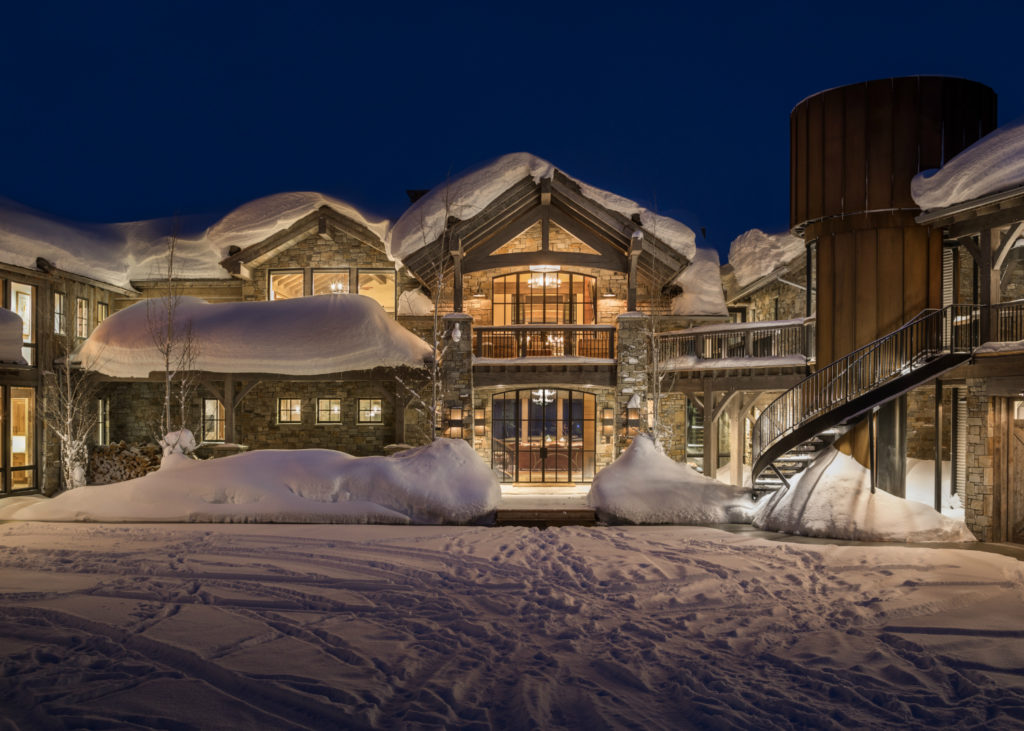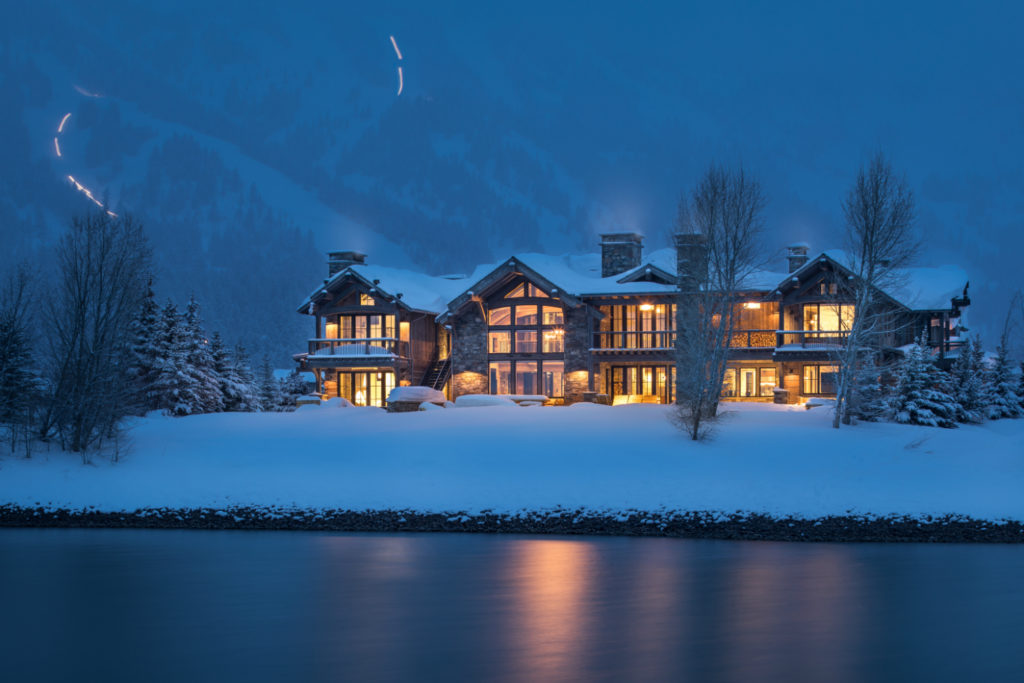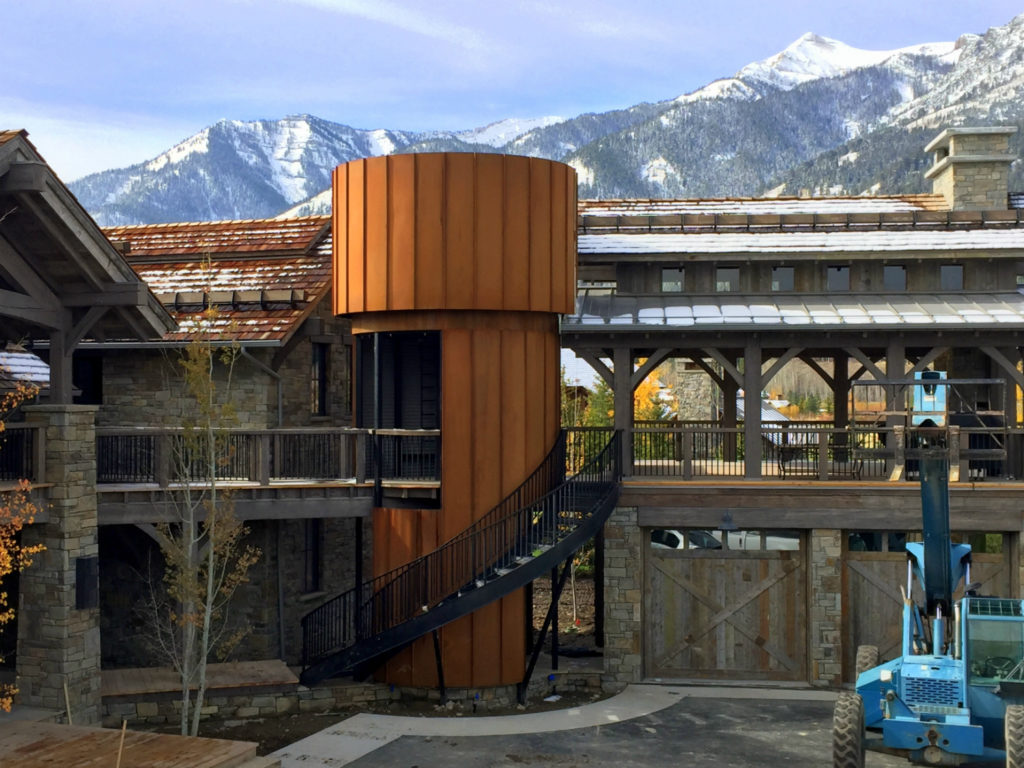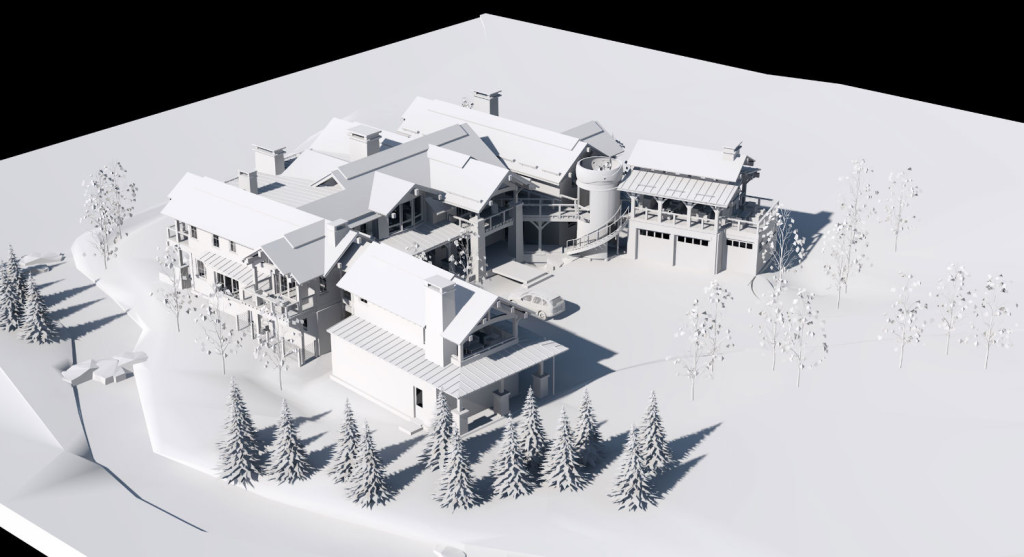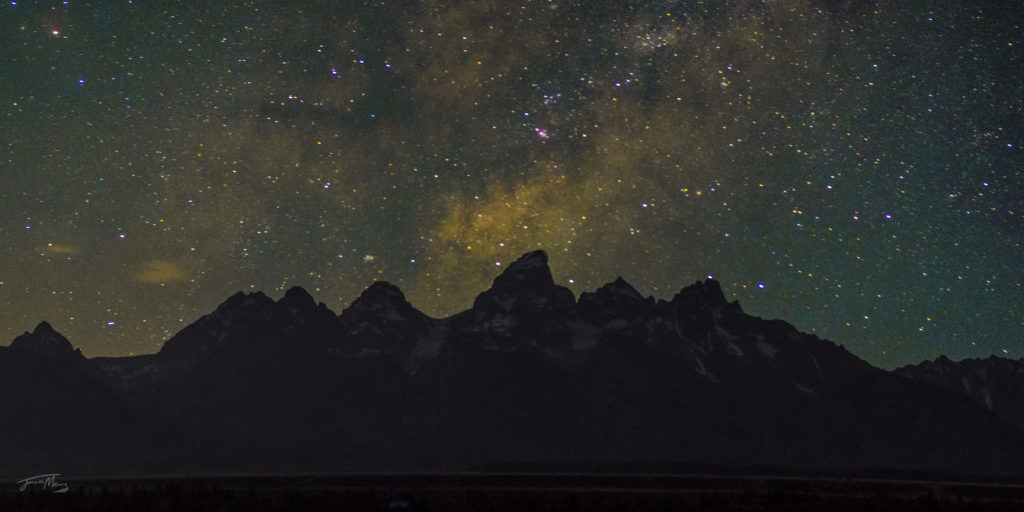
The clear mountain air in Jackson Hole provides a portal to the skies. The great swath of the Milky Way dances above the Tetons beckoning residents to stop and gaze.
One client of d|a answered the call by including an observatory in their home design. The unpolluted skies offered a window, but the practicalities of a working observatory in mountains constantly being lifted by thousands of little earthquakes and buffeted by wind, posed a few difficulties. The design also needed to meld with the neighborhood, not scream “observatory” and match the aesthetic of the house.
A large telescope requires a ceiling which will open at the touch of a button. The most common form of this is a dome with a clam shell top. But, a dome would not fit the design guidelines for the neighborhood. D|a decided to conceal the dome within a silo between the main living space and the garage. The observatory does not need a view other than straight up, so placing it by the garage utilizes a space not afforded another view. By opening up the shape with cutouts and walkways, d|a was able to keep the silo not more than 50 percent enclosed, allowing the square footage to not count against the size of the house. The subdivision in which the home was built keeps size and design standards. D|a was able to accommodate the Design Review Committee (DRC) and maintain the aesthetic of the house with the silo and a shroud around the dome. More about the shroud later.

The large telescope collects light from light-years away, often with a time-lapse photography. Because of this, it must remain perfectly still for long periods of time. A wind gust or even the rumble from a large truck could cause the picture to be blurry. D|a solved this problem by designing a long steel column rising completely independent of the silo. They maintain separate foundations and an isolation space between the column and the silo shell. The wind can rattle the silo and not affect the column and telescope. A mesh floor circles the column where the telescope is mounted, allowing the scope to be serviced.
The mesh floor doesn’t need to support a viewer using the telescope because all viewing will be done from a camera mounted to the scope, relaying the pictures to a screen within the home. From the comfort of his couch, the client can surf the stars with a remote control opening and closing the dome, and raising and directing the telescope. The only jiggling the scope will be subject to is the many minor earthquakes the area experiences being so close to an ascending mountain range.
The dome purchased for the observatory ended up being just larger than the silo and allotted space on the site. A solution was to place a shroud around the prefabricated dome. The clever folks at d|a found themselves buying PVC elbow pipes at the local hardware store to figure out the geometry of how to adjust a shroud around the dome. At the building site, standing on the mesh deck, we plotted all the points, using the pipes to figure out how high does the structure need to go to get above the roof directly adjacent. We created oddball struts to hold the shroud up. The shroud is basically a shield to hold this dome inside. This solution appeased the neighborhood DRC, concealed the dome, added interest to the silo shape and kept the flow of the design aesthetic.
The winds may blow, neighborhoods may be demanding, and challenges may arise, but d|a takes the time and uses ingenuity to give clients access to the stars.

